
Sarah Doan La Fetra (June 11, 1843 - May 7, 1919) was an American temperance worker.

Sarah Doan La Fetra (June 11, 1843 - May 7, 1919) was an American temperance worker.
Sarah Doan was born in Sabina, Ohio, on June 11, 1843, [1] the fourth daughter of the Rev. Timothy Doan and Mary Ann Custis. Her mother was a member of the famous Virginia Custis family, and her father was a Methodist minister. [2]
She prepared herself for teaching in the normal school of Professor Holbrook in Lebanon, Ohio. [1] Doan taught in the public schools of Fayette County, Ohio. [2]
In 1867 she married George H. La Fetra, of Warren County, who served three years in the army in the 39th Ohio Volunteers, [1] and after accepted a position under his cousin, Hon. James Harlan, then Secretary of the Interior. The La Fetras had three sons, the youngest of whom died in infancy. The elder, Dr. Linnaeus E. La Fetra, graduated from Wesleyan University, of Middletown, Connecticut, and from the College of Physicians and Surgeons of New York City, first honors of his class. He became a physician in one of the largest hospitals of New York City. The other surviving son was Edwin S. La Fetra, graduated from Princeton College. [2]

In 1876 she became member of the Woman's Christian Temperance Union and in 1885 Sarah La Fetra was elected President of the Woman's Christian Temperance Union, District of Columbia. [1] Under her leadership the District Union grew into a felt power. She was also for years the President of the Ladies' Aid Society of the Metropolitan M. E. Church, of Washington, and the President of the Woman's Foreign Missionary Society of that church. She was the President of the District of Columbia Branch of the Society of Loyal Women of American Liberty, and the Third National Vice-President of this Society. [2] She was one of the founders of the Florence Crittendon Hope and Help Mission in Washington. The Baltimore branch of the Woman's Foreign Society erected a building at Bidar, India, called "The Sarah D. La Fetra Memorial", in recognition of her effective labors in that society. [3]
She was a practical business woman, and for years fought the rum traffic in a sure and substantial way, by successfully managing a temperance hotel and cafe in the very heart of the city of Washington. [2] She was a suffragist, although not identified with the organization. [1]

Emily Clark Huntington Miller was an American author, editor, poet, and educator who co-founded St. Nicholas Magazine, a publication for children. Earlier in her career, she served as the Assistant Editor of The Little Corporal, a children's magazine and Associate Editor of the Ladies' Home Journal. Miller and Jennie Fowler Willing were involved with organizing a convention in Cleveland in 1874, at which the National Woman's Christian Temperance Union was formed. In September 1891, Miller was appointed Dean of Women at Northwestern University in Illinois.

Esther Pugh was an American temperance reformer of the long nineteenth century. She served as Treasurer of the National Woman's Christian Temperance Union (WCTU), a Trustee of Earlham College, as well as editor and publisher of the monthly temperance journal, Our Union.

Susan F. Ferree was an American journalist and social reformer from Iowa. Ferree served as a Washington, D.C. newspaper correspondent. She favored women's suffrage and women's rights; she also affiliated with the Woman's Christian Temperance Union (WCTU). Ferree died in 1919.

Ella M. S. Marble was an American physician who worked as a journalist, educator, and activist earlier in her career. From girlhood, she took an active interest in any movement calculated to advance the interests of women. Interested in literary and philanthropic work, Marble served as president of the District of Columbia Federation Womans' Clubs, numbering ten societies and 2,500 members ; president, District Federal; vice-president, Womans' National Press Association for state of Maine; president, Minnesota State Suffrage Association; president, Minneapolis City Suffrage Association; president, Washington City Suffrage Association; Secretary, Pro Re Noto; and secretary, White Cross Society of Minneapolis.

Helen Vickroy Austin was an American journalist and horticulturist.
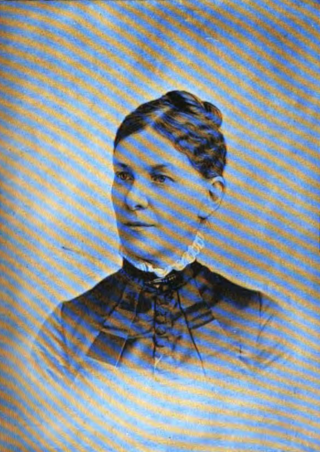
Susan Hammond Barney was an American social activist and evangelist. She was the founder of the Prisoners' Aid Society of Rhode Island, and due to her efforts, police matrons were secured for the station houses of large cities. She worked with the Woman's Foreign Missionary Society, and was the first president of the Rhode Island Woman's Christian Temperance Union (WCTU). She was instrumental in making prohibition a constitutional enactment in Rhode Island in 1886. Barney is best remembered as the WCTU's National Superintendent of Prison, Jail, Police, and Almshouse Visitation. Her wide sympathies and ministries earned her the title of "The Prisoner's Friend." It was Barney's desire to become a foreign Christian missionary, but, due to ill-health, she was not able to pursue this career; nonetheless, her first public speaking was done in the interest of the Woman's Foreign Missionary Society of the Methodist Episcopal Church.

Laura J. Rittenhouse was an American temperance activist, juvenile literature author, poet, businesswoman, and club-woman of the long nineteenth century. She was the author of the poem, "Out of the Depths".

Seraph Frissell was an American physician and medical writer who specialized in diseases of women and children. She was the first woman in Western Massachusetts to be admitted to any district medical society, and the fourth woman to be admitted a member of the Massachusetts Medical Society. Women were first admitted to medical societies in Massachusetts in 1884; but the Berkshire District Medical Society made Frissell an honorary member in 1877, and she attended its monthly meetings, receiving notices as a regular member.
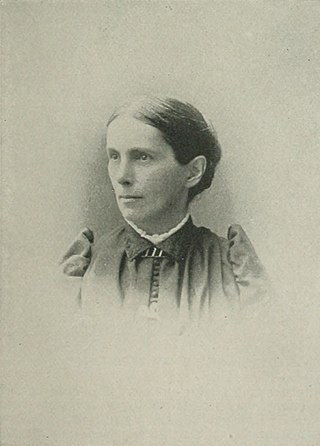
Esther Pritchard was a 19th-century American minister and editor. Pritchard was the daughter of a minister of the Society of Friends. She was one of the leading preachers of the Friends' Society in the United States, and was the Woman's Christian Temperance Union's Superintendent of the Department of Systematic Giving. Pritchard edited for some years the Friend's Missionary Advocate, and was a teacher in the Chicago Training School for Missions. Her husband's removal from Chicago to the pastorate of the Friends church, Kokomo, Indiana, severed her connection with the school and left her free to push the special work of her department. Seventeen State Unions subsequently adopted the department, while outside the Woman's Christian Temperance Union, ten Woman's Missionary Boards were influenced to create a similar agency. She died in 1900.

Emily Lee Sherwood Ragan was an American author and journalist. She was engaged in journalism in Washington, D.C., 1888–1900, and was also a contributor to other papers and magazines. By 1899, she engaged as special writer and searcher of Library of Congress. Ragan served as press superintendent of the Woman's Christian Temperance Union (WCTU) of D. C.; and president of the board of directors of the Women's Clinic. Ragan was a charter member of the National Society of the Daughters of the American Revolution (D.A.R.); and was the corresponding secretary for eighteen years of the Woman's Universalist Missionary Society, then known as Women's Centenary Association. Ragan favored woman suffrage. She was the author of Willis Peyton's Inheritance, 1889; and collaborator with Mary Smith Lockwood in preparing and publishing The Story of the Records.
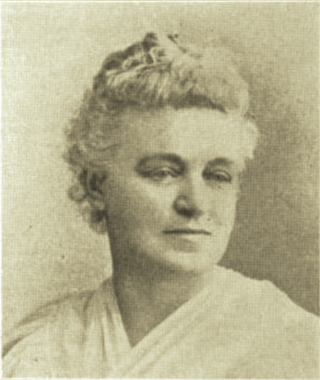
Mary Coffin Johnson was an American temperance activist and writer. She was the publisher of the National Woman's Christian Temperance Union's (WCTU) first newspaper, The Union Signal. Johnson was acquainted with Abraham Lincoln, and was a friend of Henry Ward Beecher and his wife Eunice.

Margaret Anderson Watts was an American social reformer in the temperance movement, writer, and clubwoman. She was a deep thinker on the most advanced social and religious topics of her day, and occasionally published her views on woman in her political and civil relations. She was the first Kentucky woman who wrote and advocated the equal rights of woman before the law, and who argued for the higher education of woman. She served as president of the Woman's Christian Temperance Union (WCTU) of Kentucky, and as the National WCTU's Superintendent of police matrons.

Josephine Cushman Bateham was an American social reformer, editor, and writer in the temperance movement. The Sabbath Observance Department of the National Woman's Christian Temperance Union (WCTU) was organized at the St. Louis (National) Convention in 1884, and Bateham, then of Painesville, Ohio, was appointed its first Superintendent, continuing in charge of the Department until compelled by failing health to resign in 1896. In addition, Bateham was a supporter of social reform for women.

Sarah Maria Clinton Perkins was an American Universalist minister, social reformer, lecturer, editor, and author of Sunday school books. Early in life, she was engaged in educational work. She was involved in the temperance movement and advocated for women's suffrage. She was an early abolitionist and an early Prohibitionist. Perkins was a highly educated woman, a writer and speaker of rare force. Moving to Cleveland, Ohio, after being widowed in 1880, she was for many years actively connected as National Lecturer with the Woman's Christian Temperance Union (WCTU). She filled various other positions in reform associations including, President of Cleveland's Equal Franchise Club, and president of the Literary Guild of Cleveland.

Ella B. Ensor Wilson was an American social reformer and writer of the long nineteenth century associated with the women's suffrage and temperance movements. She was a strong advocate of "equal rights" and although her birthplace was in Maryland, a slave State, and having been reared and educated under that influence, she was always opposed to slavery. Wilson supported women's causes with her influence and money. A year and a half before her death, she was declared insane.
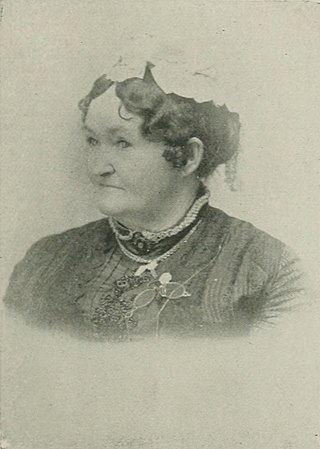
Alice A. W. Cadwallader was an American philanthropist and temperance activist. She served in Florida as state president of the Woman's Christian Temperance Union (WCTU).

Anna Smeed Benjamin was an American social reformer and activist involved in the temperance movement. After being drawn into the work of the Woman's Foreign Missionary Society of the Methodist Episcopal Church, she joined the temperance cause, becoming one of its best known orators. A skilled parliamentarian, in 1887, she was elected National Superintendent of the department of parliamentary uses in the Woman's Christian Temperance Union (WCTU). In this role, she issued a series of "Parliamentary Studies". The drills which she conducted in WCTU "School of Methods" and elsewhere were popular and well attended by both men and women. For ten years, she served as president of the Michigan state WCTU.
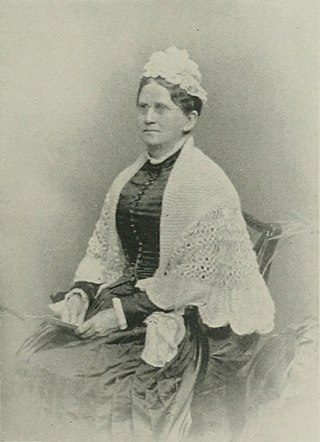
Frances C. Jenkins was an American evangelist, Quaker minister, and social reformer, involved in the temperance and suffrage movements of the day. While in Illinois, she served as a vice-president of the state's Woman's Christian Temperance Union (W.C.T.U.). She came to Kansas City, Missouri about 1880 and was active in church and club work there. It was chiefly through her influence that the Friends' Church at 30th Street and Bales Avenue was organized in that city in 1882. Several times since 1890, Jenkins was pastor of this church. In Kansas City, she was the first president of the Federation of Women's Clubs and was also president of the first equal suffrage organization in that town.
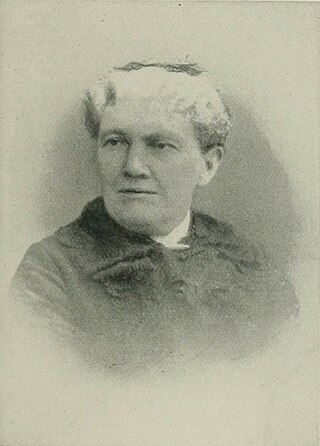
Mary Bynon Reese was a leader in the U.S. temperance movement, serving as lecturer, organizer and evangelist for the Woman's Christian Temperance Union (W.C.T.U.) in Ohio, Washington state, and at the national level. She was also the poet laureate of Steubenville, Ohio.
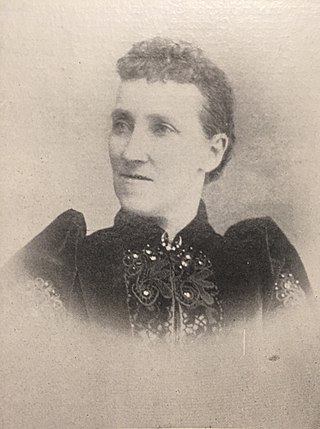
Levancia Holcomb Plumb (1841–1923) was an American business woman, financier, and temperance reformer. She was the president and chief stockholder of the Union National Bank of Streator, Illinois. At the time, with one exception, she was the only woman head of a bank in the U.S.
{{cite book}}: CS1 maint: multiple names: authors list (link) CS1 maint: numeric names: authors list (link)